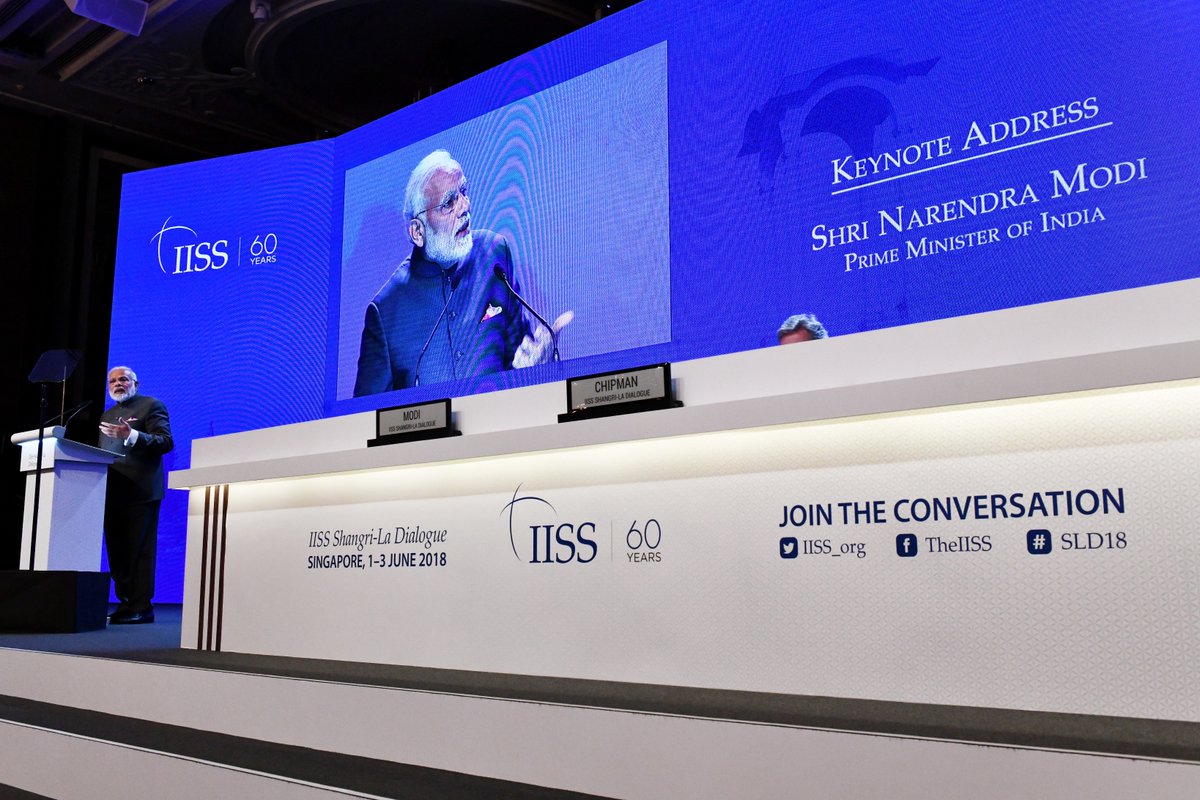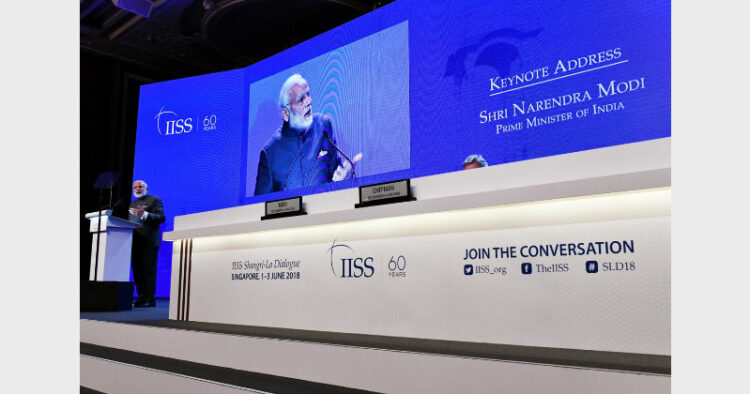Here are the seven elements with which Prime Minister Narendra Modi defines India”s Vision for the Indo-Pacific Region:
“The Indo-Pacific is a natural region. It is also home to a vast array of global opportunities and challenges. I am increasingly convinced with each passing day that the destinies of those of us who live in the region are linked. Today, we are being called to rise above divisions and competition to work together,” Prime Minister Narendra Modi said in his Keynote Address at Shangri La Dialogue on June 1, during the Singapore visit.
He said that India”s ideals for democracy can be translated into five S in Hindi: “?????? (respect); ?????? (dialogue); ?????? (cooperation), ????? (peace), and ??????? (prosperity).
Prime Minister also said that the ten countries of South East Asia connect the two great oceans in both the geographical and civilisational sense. Inclusiveness, openness and ASEAN centrality and unity, therefore, lie at the heart of the new Indo-Pacific. He also made it clear that India does not see the Indo-Pacific Region as a strategy or as a club of limited members, nor as a grouping that seeks to dominate, he said.
In conclusion, he said that India’s own engagement in the Indo-Pacific Region – from the shores of Africa to that of the Americas – will be inclusive. “We are in-heritors of Vedanta philosophy that believes in essential oneness of all, and celebrates unity in diversity ??? ?????, ??????? ?????????? – Truth is one, the learned speak of it in many ways. That is the foundation of our civilizational ethos – of pluralism, co-existence, open-ness and dialogue. The ideals of democracy that define us as a nation also shape the way we engage the world,” he added.
“India”s vision for the Indo-Pacific Region is, therefore, a positive one. And, it has many elements…” said the Prime Minister Narendra Modi.
Here are the seven elements with which Prime Minister Narendra Modi defines India”s Vision for the Indo-Pacific Region (as he spoke):
- It stands for a free, open, inclusive region, which embraces us all in a common pursuit of progress and prosperity. It includes all nations in this geography as also others beyond who have a stake in it.
- Southeast Asia is at its centre. And, ASEAN has been and will be central to its future. That is the vision that will always guide India, as we seek to cooperate for an architecture for peace and security in this region.
- We believe that our common prosperity and security require us to evolve, through dialogue, a common rules-based order for the region. And, it must equally apply to all individually as well as to the global commons. Such an order must believe in sovereignty and territorial integrity, as well as equality of all nations, irrespective of size and strength. These rules and norms should be based on the consent of all, not on the power of the few. This must be based on faith in dialogue, and not dependence on force. It also means that when nations make international commitments, they must uphold them. This is the foundation of India”s faith in multilateralism and regionalism; and, of our principled commitment to rule of law.
- We should all have equal access as a right under international law to the use of common spaces on sea and in the air that would require freedom of navigation, unimpeded commerce and peaceful settlement of disputes in accordance with international law. When we all agree to live by that code, our sea lanes will be pathways to prosperity and corridors of peace. We will also be able to come together to prevent maritime crimes, preserve marine ecology, protect against disasters and prosper from blue economy.
- This region, and all of us, have benefitted from globalisation. Indian food is among the best examples of these benefits! But, there is growing protectionism – in goods and in services. Solutions cannot be found behind walls of protection, but in embracing change. What we seek is a level playing field for all. India stands for open and stable international trade regime. We will also support rule-based, open, balanced and stable trade environment in the Indo-Pacific Region, which lifts up all nations on the tide of trade and investment. That is what we expect from Regional Comprehnsive Economic Partnership. RCEP must be comprehensive, as the name suggests, and the principles declared. It must have a balance among trade, investment and services.
- Connectivity is vital. It does more than enhance trade and prosperity. It unites a region. India has been at the crossroads for centuries. We understand the benefits of connectivity. There are many connectivity initiatives in the region. If these have to succeed, we must not only build infrastructure, we must also build bridges of trust. And for that, these initiatives must be based on respect for sovereignty and territorial integrity, consultation, good governance, transparency, viability and sustainability. They must empower nations, not place them under impossible debt burden. They must promote trade, not strategic competition. On these principles, we are prepared to work with everyone. India is doing its part, by itself and in partnership with others like Japan – in South Asia and Southeast Asia, in the Indian Ocean, Africa, West Asia and beyond. And, we are important stake-holders in New Development Bank and the Asian Infrastructure Investment Bank.
- All of this is possible, if we do not return to the age of great power rivalries I have said this before: Asia of rivalry will hold us all back. Asia of cooperation will shape this century. So, each nation must ask itself: Are its choices building a more united world, or forcing new divisions? It is a responsibility that both existing and rising powers have. Competition is normal. But, contests must not turn into conflict; differences must not be allowed to become disputes. Distinguished members of the audience, It is normal to have partnerships on the basis of shared values and interests. India, too, has many in the region and beyond.














Comments